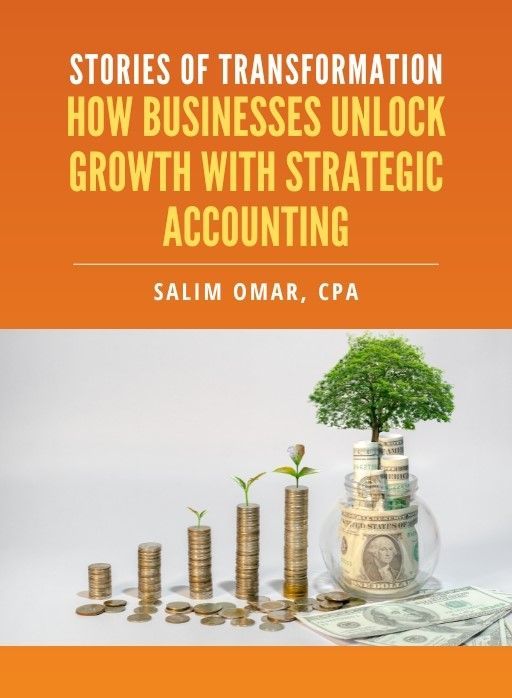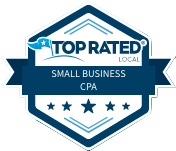How Depreciation Can Be a Game-Changer for Your Tax Return

Depreciation, tax return strategy, bonus depreciation, Section 179, asset purchases, business tax deductions, equipment write-offs, IRS deductions, tax savings strategies, small business tax planning—these aren’t just buzzwords. They’re real tools that can have a direct impact on your bottom line.
If your business has made any major purchases—machinery, vehicles, office furniture, or even computers—you're probably eligible to take advantage of depreciation. And doing it right could knock thousands off your tax bill.
Too often, businesses treat depreciation like an afterthought, but smart tax planning flips the script. It turns depreciation into a proactive tool—not just a reactive formality. By planning purchases and understanding how depreciation works, businesses can free up cash, improve their tax position, and reinvest more confidently. Let's dive into why depreciation matters and how it can be a serious game-changer.
What Is Depreciation, Really?
In accounting speak, depreciation is the method of spreading out the cost of a business asset over its useful life. But in tax terms, it’s a way to lower your taxable income year by year.
Here’s how it works: instead of deducting the full cost of, say, a $10,000 computer system in the year you buy it, depreciation allows you to write off a portion of that cost over several years. This smooths out your expenses and helps match costs with income generation.
However, the tax code also offers some powerful ways to accelerate depreciation. That’s where bonus depreciation and Section 179 come in—and they can flip the script entirely.
Bonus Depreciation: Accelerate the Write-Off
Bonus depreciation is like hitting fast-forward on your deductions. Rather than waiting five or seven years to deduct the full value of a business asset, bonus depreciation lets you write off a huge chunk—sometimes the entire cost—in the same year you bought it.
Thanks to changes from the Tax Cuts and Jobs Act, businesses could deduct 100% of qualifying property in the year it was placed in service (this percentage is gradually phasing down, so timing matters). It’s especially useful for big-ticket purchases or when you’re looking to offset higher-than-usual income.
Real-Life Example:
A consulting firm bought $80,000 worth of office technology in December. Instead of spreading deductions across several years, they used bonus depreciation to deduct the entire amount in that tax year, cutting their taxable income drastically—and freeing up cash to expand services.
Section 179: More Control, Faster Deductions
Section 179 offers another powerful way to deduct asset purchases right away. It lets you deduct up to a certain limit (currently over $1 million) on qualifying business equipment and software—again, all in the year the asset was placed in service.
Where bonus depreciation automatically kicks in unless you opt out, Section 179 gives you more control. You get to choose which assets you want to deduct and how much.
It’s especially valuable for small businesses that need fast
write-offs but want flexibility. You can use Section 179 on both new and used equipment, which makes it ideal for businesses looking to save on costs without sacrificing tax benefits.
Timing Purchases Strategically
Here’s where strategy matters. The tax year you place the asset in service is what counts—not the purchase date. So if you bought a new delivery van in December but didn’t use it until January, your deduction falls in the next tax year.
This can be a good or bad thing, depending on your income and planning goals. If you're having a high-income year, placing the asset in service before December 31 could deliver significant savings. If next year looks more profitable, holding off might give you more bang for your tax buck later.
Depreciation Isn’t Just for “Equipment”
Depreciation covers more than heavy machines and work vans. It includes:
- Computers and office furniture
- Software and technology systems
- Business vehicles (with limitations)
- Certain improvements to buildings like HVAC systems
Some industries—like construction, manufacturing, and logistics—see big wins here. But even solo consultants, design studios, and ecommerce businesses can leverage depreciation to stay lean and profitable.
What About Used Assets?
Yes, both bonus depreciation and Section 179 apply to used equipment, as long as it’s new to you and your business. This opens up the door for smaller companies to get in on serious tax savings without going into major debt.
Imagine picking up a gently-used delivery truck or buying second-hand computer systems for your growing team—you're still eligible to deduct big.
Common Mistakes to Avoid
It’s not all upside. Here are a few things to watch out for:
- Missing the service date: It’s not the purchase date that matters—it’s when the asset is in use.
- Forgetting to elect Section 179: This isn’t automatic;
your CPA must make the election on your return.
- Over-depreciating vehicles: The IRS limits write-offs for certain passenger vehicles, especially luxury cars.
- Assuming you can mix and match everything: Not all property qualifies for both bonus depreciation and Section 179.
This is where a professional CPA makes a world of difference. They’ll help you avoid costly mistakes and create a depreciation strategy that works for your business.
Bottom Line: Don’t Sleep on Depreciation
Every year, businesses leave thousands—sometimes tens of thousands—of dollars on the table by not properly using depreciation. It’s more than an accounting concept; it’s a strategic advantage. Whether you're buying your first office printer or scaling up with industrial equipment, the tax savings can be immediate and massive.
Straight Talk CPAs helps businesses of all sizes make smart tax decisions that move the needle. If you’ve got assets—or plan to buy them soon—now’s the time to look at depreciation differently. Our team can help you create a tax plan that actually supports your growth.
Free eBook:
Stories of Transformation


Salim is a straight-talking CPA with 30+ years of entrepreneurial and accounting experience. His professional background includes experience as a former Chief Financial Officer and, for the last twenty-five years, as a serial 7-Figure entrepreneur.




